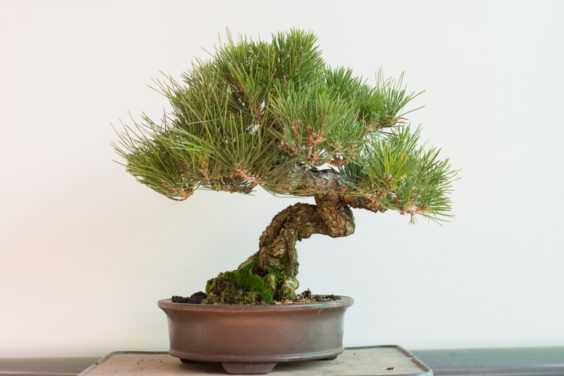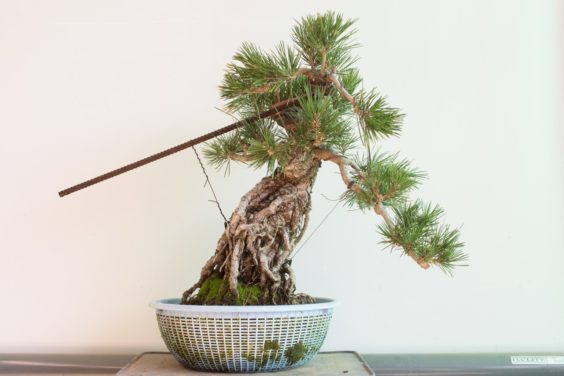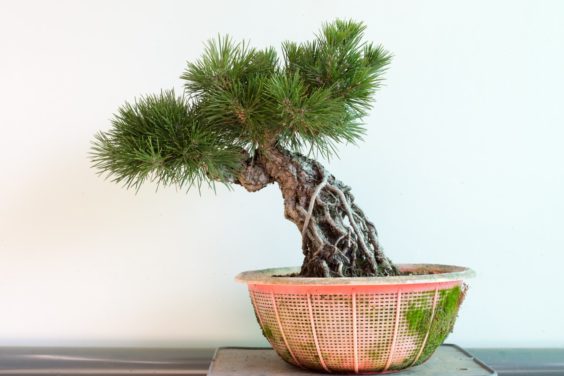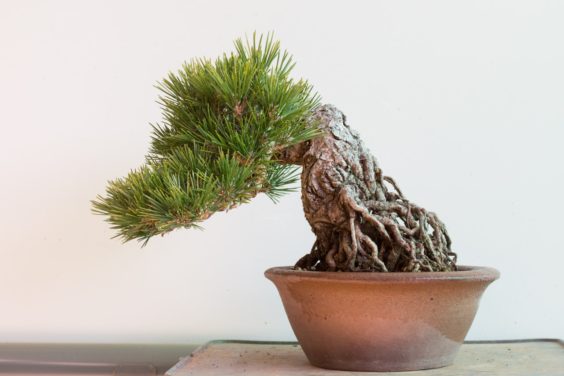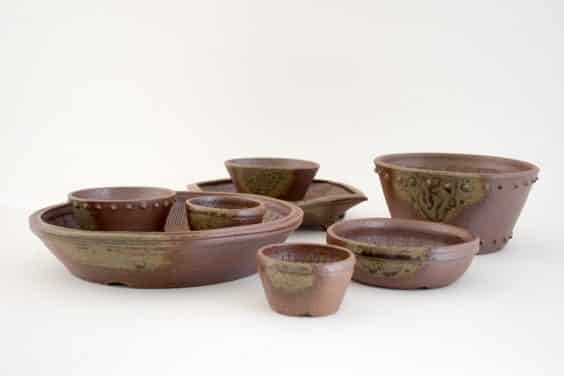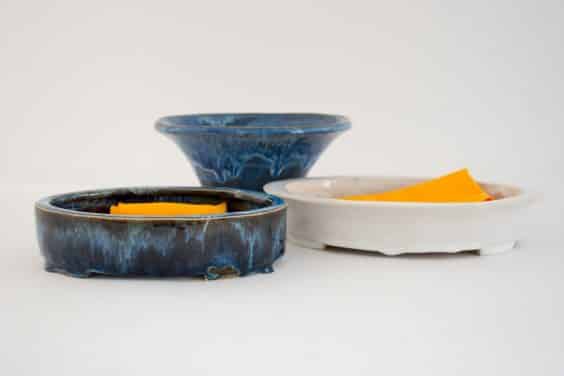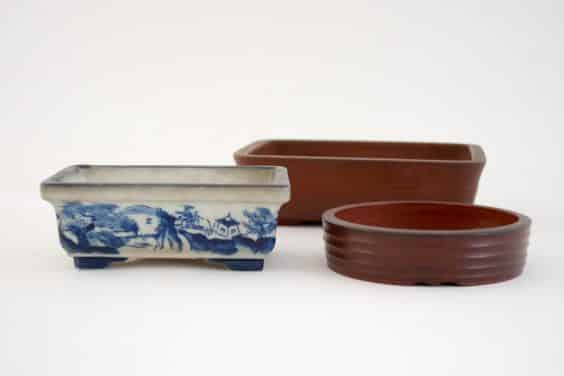After discussing exposed root pines for the last few posts, I thought I’d wrap up the series with a few photos showing some different approaches to the style.
The tree below is 23 years old. About midway between the soil and the first branch, the trunk splits into several roots that have essentially fused together. This makes the tree look like it has a single trunk – not exactly what comes to mind when we think of exposed root pines.
23 year-old black pine
I wrote about the tree in my second post back in 2009 – you can see it here.
The tree below has more clearly exposed roots. I used a tall container with a 6″ diameter that allowed the roots to spread out as they descended. The rebar is being used to lift the apex of the tree and will stay on for one more year.
13 year-old exposed root black pine
The next pine is also 13 years old. I started decandling it a few years ago and it’s beginning to fill in. I plan to move it to a bonsai pot this winter.
13 year-old exposed root black pine
The last pine I’ll share today is unusual in that it has a large trunk that splits into many small roots that continue the tree’s taper. Like the two trees above, it’s 13 years old. The foliage is more compact because I’ve been decandling it for a few years now and it’s been wired twice. I plan to expand the foliage over the next 2-3 years at which point I’ll look to exhibit the tree.
13 year-old exposed root black pine
Bay Island Bonsai 18th Annual Exhibit This Weekend!
Speaking of exhibits, this weekend marks BIB’s 18th annual exhibit. This year’s exhibit promises to be a good one as a couple of the trees were exhibited in last year’s U.S. National Exhibition in Rochester, New York.
Saturday features an auction of member trees, and a member sales area will be staffed both days. I’ll be among several vendors with a selection of trees, tools, supplies and an assortment of pots from makers like Mitsunobu Ito of Ehime, Japan, Roy Minarai of Greenville, South Carolina, and various Japanese and Chinese pots both new and old.
Mitsunobu Ito pots
Roy Minarai pots
Japanese and Chinese pots
For those who haven’t been before, the show is a lot of fun. And for those of you who have visited past exhibits, I look forward to seeing you again this year! See exhibit time and location details here.
Subscribe to Indian Bonsai Art
New Posts Delivered Every Tuesday and Friday

